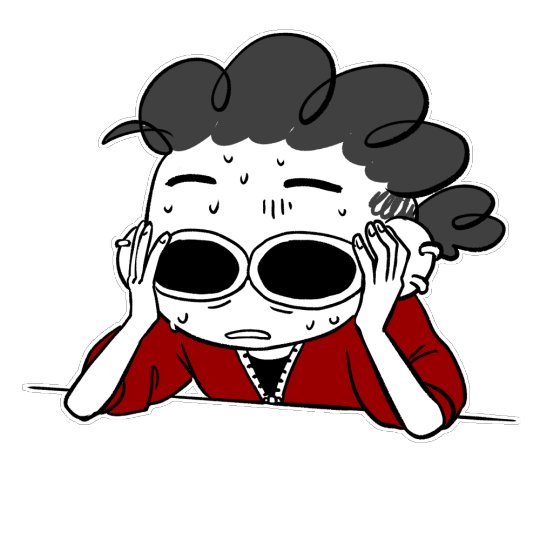#taxonomy polls
Explore tagged Tumblr posts
Note
we need a poll for a monophyletic definition of "bug"
it can be anything from "any animal is a bug" to "only hemipterans are bugs" :p
(if you're taking suggestions, then animalia, protostomia, ecdysozoa, panarthropoda, arthropoda, hexapoda, insecta, pterygota, hemiptera)
See, I want to do that poll, especially bc I know I've been very vert-centric (sue me, my training is in vert paleo); but I know I've already seen that poll outside of palaeoblr???
14 notes
·
View notes
Text
I've just had a very trying time in the comments section and I need to know.

#dont come at me about using the word 'believe'#you know what im trying to convey#no judgement I just need to have a silly little poll#and i have a large enough follower count to want to know my audience#evolution#science#biology#taxonomy
856 notes
·
View notes
Text
Phylum Final Round!

For the Phylum Level Champion!
Reminder: This is the final PHYLUM round. Winner goes on to classes!
Magnoliophyta (aka angiosperms, flowering plants): A large, diverse phylum with over 300,000 known species. Two of the more well-known sub-divisions are monocots (including grains, onion-like plants, and irises and lilies) and eudicots (including most leafy trees, a wide variety of flowers such as sunflowers and roses, and many food plants from coffee to cabbages.)
Bryophyta (aka mosses): Small but mighty, and among the most ancient of land plants. 95% of all moss species are in the class Bryopsida, while Sphagnopsida contains the bog-loving peat mosses.
#magnoliophyta#bryophyta#plant taxonomy showdown#battle of the plants#phylum final round#phylum#plant bracket#tumblr bracket#bracket tournament#poll bracket
487 notes
·
View notes
Text
1K notes
·
View notes
Text
#mdzs#jin guangyao#nieyao#xiyao#uhhh tbh i dont go here#because im in the rare position of being a jiggy apologist without being a jiggy stan#brain cells all taken up by jiang cheng stannery. but i can logically recognize that jiggy is not a cackling villain#victim of his circumstances. did his best with the shitty hand he was dealt. wei wuxian's narrative parallel. also a kickass xiandu#so in light of this i cant actually accurately describe the taxonomies of jiggy stans. sorry for misrepresenting your community#we are allies tho. comrades in arms. in this bitter battle against the anti army#also jin guangshan should krill he elf#yanyan polls
200 notes
·
View notes
Text
horsethoughtbarn 2 favorite
#i didnt include every single subspecies as not to clog the poll so apologies if i missed your favorite subspecies#an image shall be posted later if i remember dont fret#poll#horse#horses#horseblr#horseposting#horse community#equid#equids#equine#equines#equestrian#extant species#taxonomy#question#questions#horseimagebarn#horseimagebarn talking#horsethoughtbarn
58 notes
·
View notes
Text
116 notes
·
View notes
Text
Round 2 - Arthropoda - Cephalocarida



(Sources - 1, 2, 3)
Cephalocarida is a class of crustaceans commonly referred to as “Horseshoe Shrimp.” There is only one known family, Hutchinsoniellidae, with 12 living species.
Both the larvae and adults are found on the sea floor, feeding on marine detritus. They are small, with an elongated, pigmentless body 2 to 4 mm in length. They have a large head, the hind edge covering the first thoracic segment. They have two pairs of antennae, with the second pair located behind the mouth. The mouth is covered by a large upper lip and flanked by a pair of mandibles. The first pair of maxillae are very small, but the second pair is similar to a pair of legs, a possible holdover from primitive arthropod ancestors. Neither the adults nor the nauplius larvae have eyes. The thorax consists of 9 limb-bearing segments, followed by 10 limbless abdominal segments and a telson. Cephalocaridans are hermaphroditic, and carry their eggs with them. Mating has yet to be observed.
Fossils of cephalocaridans have been dated to the Late Cambrian.
#again no propaganda cause there’s not much out there about them#but like idk they look Cool they’re like if a tardigrade had facehugger aesthetics#and they help us with arthropod taxonomy#arthropoda#round 2#animal polls#Cephalocarida
32 notes
·
View notes
Text
Taxonomy Tournament Round 2: Invertebrates
















Chordate Bracket
#Animal Tournament#Animal Tournament Announcements#biology#taxonomy#animal biology#marine biology#evolution#zoology#tumblr polls#tournament poll#poll tournament#bracket tournament#worms#insects#spiders
72 notes
·
View notes
Text
If you voted, please provide your reason in the tags. I want to know who is thinking the same way I am thinking. If you disagree, then I would like to see if you can dissuade me.
You may research primates here.
37 notes
·
View notes
Text
My last one got some attention and I accidentally only set it for a short time frame so here is BUG POLL 2!!!!!!
#I know there are more than these but again it’s just some popular groups#feel free to list in the tags any I missed that you like!#polls#insects#bugs#coleoptera#Diptera#Hymenoptera#odonata#lepidoptera#hemiptera#orthoptera#phasmida#ephemeroptera#mantodea#blattodea#Isoptera#taxonomy#plz rb
42 notes
·
View notes
Text
further explanation on the ammonite thing: there's an ethnic group FREQUENTLY mentioned in the Torah called the Ammonites and Max and I will never stop picturing them as just, floating-in-midair extaint sapient Ammonites that constantly get into conflict with the Israelites,
581 notes
·
View notes
Text

HAHAHAA OKAYY
13 notes
·
View notes
Text
Bonus Round 1/Semi-finals: Rosids vs Basal Eudicots

Apples of Discord vs Sacred Lotus
Rosids: The romantic clade. Do you want not only a dozen roses, but also a nice glass of wine and some strawberries dipped in chocolate to go with them? Of course you do. Vote Rosids. (And yes, this is also the cannabis clade, so light up/grab your edibles.)
Basal Eudicots: Here be funky flowers: the sacred lotus, poppies, the king protea of South Africa and the waratah of Australia. Also, macademia nuts.
(What's a eudicot? The class that won the previous round. More info here. Many taxonomic categories can be divided up into "basal" and "core" members, the basal ones splitting off the evolutionary tree relatively early on, while the core ones have a more recent common ancestor.)
#rosids#basal eudicots#plant taxonomy showdown#battle of the plants#bonus round semifinals#bonus round#plant bracket#tumblr bracket#bracket tournament#poll bracket
161 notes
·
View notes
Text
Reblog for a larger sample size!
#poll#tumblr polls#my polls#random polls#polls#poll time#polls on tumblr#tumblr poll#animals#mammal#Mammals#Bird#Birds#Avian#Avians#Reptile#Reptiles#Reptilian#Reptilians#amphibians#Amphibian#Fish#Fishes#Invertebrates#Invertebrate#zoology#taxonomy
29 notes
·
View notes
Text
option one asserts that clouded leopards are true big cats because they are included within the pantherinae subfamily.
option two asserts that clouded leopards are stem big cats, meaning that they are most closely related to big cats, but are not themselves true big cats because they are outside of the panthera genus.
option three asserts that “big cat” is only a descriptive term, not a taxonomically defined one. this means that any cat species, including those outside of the pantherinae subfamily, can be referred to as big cats if they are physically large enough to qualify as megafauna. clouded leopards, reaching a maximum of around 50-70lbs, are thus not big cats. but pumas, which can reach up to 200lbs, are big cats, despite placing in the felinae (“little cat”) subfamily.
17 notes
·
View notes